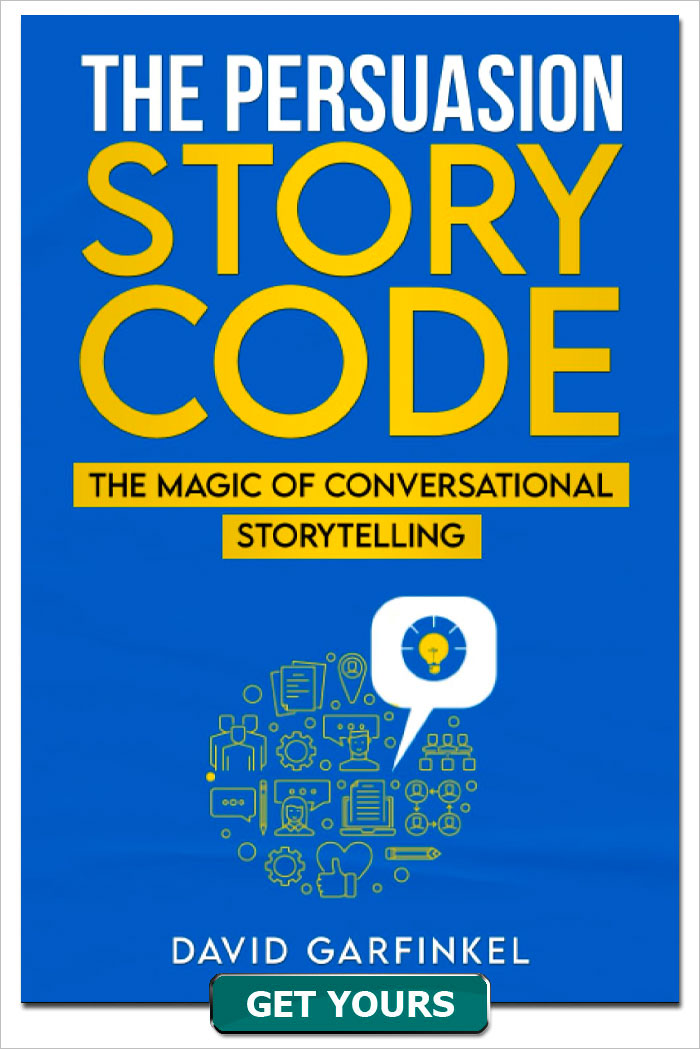Episode 003 - Problem-Solution Headlines
Published by: David Garfinkel on 05-03-2017
Tweet
I was recently watching a video sales letter from an investment advice publisher. The narrator told the story of Steve Jobs, in 2008, walking in the hills of San Jose, California, with one of Apple’s best engineers.
Jobs had the vision of an Apple car. The one problem he couldn’t see his way past at the time was the enormous amount of data back and forth needed to make this kind of car work.
The technology was not available in 2008 to transmit, manage, store, and access all that data – fast enough to operate the kind of car Steve Jobs had in mind.
Fast forward to today, nearly a decade later. The narrator of the VSL said, one company now has the technology needed to bring into physical reality Steve Jobs’s unrealized vision.
That one mystery company, the narrator said, has solved the one problem standing in the way of building the Apple car. (Of course, the narrator wouldn’t reveal which company it was. You had to buy the investment newsletter for that, which I didn’t do.)
Now here’s the point: Solving one crucial problem can be worth A LOT to a company… or, to an individual. Or both.
And, when you put the promise of a solution to an important problem into your headline… that can be a crucial ingredient in a very profitable sales message.
Today we’re going to talk about how all that works, and how you can do that… but first…
Let me remind you that copy is powerful. Now, you’re responsible for how you use what you hear on this podcast. Most of the time, common sense is all you need. But if you make extreme claims… and/or if you’re writing copy for offers in highly regulated industries like health, finance, and business opportunity… you may want to get a legal review after you write and before you start using your copy. My larger clients do this all the time.
OK, now back to problems and solutions… and the problem-solution headline.
• Why you get your best results when you identify the itch that they can’t scratch… and, how to identify that itch.
- Let’s talk about carpet-bombing versus laser focus. Out with the carpet and in with the laser.
° O.M. Scott, founder of a company in the 1800s that today is known as Scott’s Miracle Grow
° Carpet-bombing approach. Could have advertised his original grass - seed with all of these possible benefits
- The speed that the grass grows
- the research that went into developing the grass seed
- the cost-effectiveness of the product
- that the grass seed required less fertilizer than other brands
- awards the grass seed had won
° But Mr. Scott was smarter than that. He knew people didn’t care or worry about those things.
° What they did worry about was: that their grass would turn brown in the summer, or just that it “wasn’t green enough.” (You’ve probably seen people worry about this. Maybe you’ve even experienced this worry yourself about your own lawn.)
° So – he told his marketing team: “People don’t buy our grass seed… they buy greener lawns.”
° Because Mr. Scott knew the itch they couldn’t scratch was, “How can I get a greener lawn?”
° It looks simple. And the result is simple. Getting to that result, though, is rarely simple. As you will discover the next time you try to do this yourself.
° But I’d like to make it simpler for you.
° So… how do you do this for your own product or service, and your own marketing?
° Step 1. Get to know a few of the people who are likely to be your customers.
° Step 2. Talk to them. LISTEN to what they say. Listen closely. Nail down what they say and how they say it. Especially, their complaints. Not about your product or politics or religion or sports. Their complaints about the problem your product or service seeks to solve.
° Then… get the answer to this famous question: “What keeps them awake at night?”
° The answer to this is “the itch they cannot scratch.”
° IMPORTANT: DON’T rephrase it to make it more “correct.” Don’t say, “We increase the chlorophyll content of every blade of grass you grow.”
Say it the way they say it, so they’ll instantly recognize it: “We give you a greener lawn.”
• The hard core reality is most people are NOT driven by goals or dreams. Instead, they simply live their life dealing with one problem after another. Knowing this helps you to get people to buy into your solution.
How to “reach people where they live” with your headline:
° First, understand that seeking out and focusing on problems is built into human biochemistry. There’s a solid feeling of familiar certainty that courses through us when we have the chemical cortisol in our system, which is associated with worry and danger. We automatically revert towards the negative. This default response is built in to protect us.
° For the purpose of creating your winning problem-solution headline, consider this: Every complaint you hear is the expression of a problem in search of a solution.
° Again, the language people most commonly use in their complaints, or in descriptions of their worries and their problems, is the language you want to make careful note of. (Yes, that means “write it down.”)
°As a business owner or copywriter or marketing pro, you may have worked hard to keep your thinking and even all your languaging very positive.
Understand – this is a learned and added skill. And that most people are not like that. Even people who are very positive most of the time are not always so positive when it comes to how they think and feel about problems.
° The key to problem-solution headlines – as with so much of copywriting – is to really understand at a very specific level how your customers actually think, feel, and talk about the problem or problems you can help them solve.
° The point of greatest pain and urgency is always a good bet on where to start, and what to talk about in your headline.
It’s the itch they cannot scratch.
• How to create a great problem-solution headline for your next promotion
° Here’s a classic problem-solution headline most people already know:
They laughed when I sat down at the piano. But when I began to play…
(John Caples)
° Why is this a “problem-solution” headline? And why is it good?
° Well-known fear of most people is public speaking. Seinfeld joke.
Playing the piano in front of others has got to be right up there with public speaking.
° So what’s the problem with public speaking? People will laugh at you. You’ll be embarrassed.
° Same thing with playing the piano in front of a group.
° In this headline, the implied solution is that they weren’t ridiculing… they were impressed. Appreciative.
° WARNING: This is a very hard kind of headline to write from in many instances. Writing first person copy can be tough until you have enough experience. It requires more advanced skills than second person (you) or third person (he, she) copy.
Easy and acceptable solution: Write it in third person.
This way: They laughed when he sat down at the piano… but when he began to play…
° The key thing is to focus on the problem / fear of problem / your prospect has… and promise, or at least strongly hint at, a solution.
Here are a few templates to get you started on your problem/solution headline:
People Who Used To __(have problem)__ Now __(have arrived at this solution)__
Finally… A Way To __(solve a problem)__
Once You Know This, You’ll Laugh At __(problem)__
Famous European Secret For __(solving the problem)__ Now Available In America
Why This __(someone like your prospect)__ never worries about __(problem)__ anymore
Keywords: headlines









